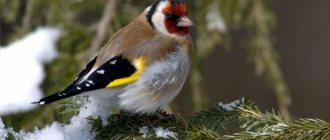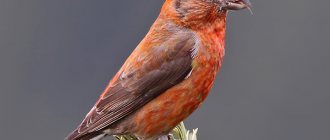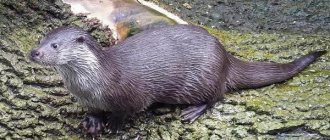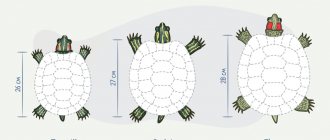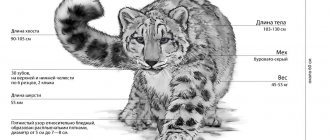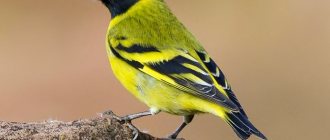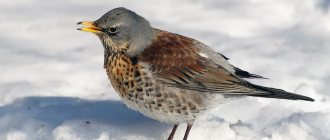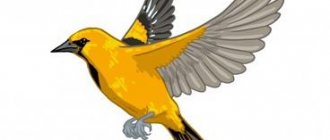The partridge is a bird that many have heard of. The external resemblance to ordinary chicken and the same radical composition in the name, however, are deceptive signs.
This bird belongs to the pheasant family, and uses its inconspicuous color, like that of chickens, only for camouflage purposes. There are other features of this amazing bird, which we will discuss in this article.
Description of partridge
Partridges belong to the pheasant family, the subfamilies partridge and grouse, which include more than 22 genera, each with from one to 46 subspecies. However, despite the species diversity, all birds are united by a sedentary lifestyle, inconspicuous color, small size and incredible endurance in extreme conditions.
Appearance
The appearance of almost all partridges is the same: it is a small bird. Their height reaches 35 cm, but rarely higher. Weight is half a kilogram. With the exception of white partridges, weighing up to 1800 grams. The upper plumage is usually gray-brown.
A pattern of black repeating spots may be present in the wing area. Some species have spurs on their legs, while others do not. Sexual dimorphism is weakly expressed, but females are paler in color.
Character and lifestyle
Partridges lead a terrestrial lifestyle, feeding mainly on plant matter. They prefer to nest on the ground, like many pheasants. They diligently hide their homes in thickets of abundant foliage and bushes.
The great popularity of partridge meat among predators has made this bird very cautious. The horses move, looking around, listening and looking closely to see if there is any danger around. As with most pheasants, flying is not the partridge's strong point. But running, on the contrary, is very good.
These birds are monogamous in choosing a partner. Each time during the mating season, they find their mate and nest. The exception is the Madagascar subspecies
For most of their lives, partridges try not to attract attention. They move very quietly and calmly. By winter, they accumulate quite an impressive fat reserve, which allows them to leave their hiding places only in urgent cases. They lead a diurnal lifestyle. The search for food takes a short period of time, no more than three hours a day.
How long do partridges live?
In captivity, due to constant extermination by predators and hunters, partridges rarely live beyond four years.
Where do partridges live?
“Oh, partridge! Her beautiful mottled brown and gray feathers! And her liveliness, dexterity and activity? Well, is it possible not to touch her with her cuteness?” This is exactly how S.T. once described this wild bird. Aksakov in “Notes of a Gun Hunter”. It is this native that has been the favorite trophy of our hunters for so many centuries. Why native? Because initially this bird was not found on our lands and came from Asia. But then it took root, settled down and is not migratory.
Today, these birds mainly live in the northern zone and their distribution area can be divided into two areas. Some species (northern) inhabit the tundra expanses of Asia, Europe, and northern islands such as Spitsbergen and Greenland. Southern species live in Asia Minor, Southern Europe, Mongolia, the Caucasus all the way to Tibet. Birds live in open tundra areas, do not settle in dense forests or swamps, preferring dry steppes, forest-steppes, meadows, placers in the mountains, tundra and even semi-desert. The gray partridge is also actively settling in Canada and the USA today.
Way of life
As we have already said, almost all species of partridge lead a sedentary lifestyle. The only exceptions are the tundra and white birds, which move south in severe winters. Gray partridges living in Siberia also fly to Kazakhstan for the winter. Most of the time they live in pairs, raising offspring, in other periods - in flocks.
Catching this “wild chicken” is not so easy, as it is a very careful and attentive bird. While searching for food, she constantly listens, freezes on high areas of the ground, looking around the surroundings, and freezes when she sees danger. If a predator smells it, the bird takes flight or flies away. By the way, these birds run very quickly, but they don’t like to fly.
Reproduction and offspring
These birds are highly fertile. In the spring, they find their pair or form one. Unlike pheasants, the male partridge actively protects the offspring and takes care of the female. The nest contains from 9 to 25 eggs, which are incubated for about 20-24 days. After which, simultaneously, within 24 hours, chicks are born.
From the first minutes of life, the offspring show themselves to be active and mobile, literally emerging from the shell they are ready to follow their parents. After about a week, the chicks acquire the ability to take off, and after 1.5-2 months they become similar to adults.
Diet
The diet of partridges is dominated by cereals and weed seeds. Most of all, these birds love to feed on millet or buckwheat. From the moment they are born until they are one month old, partridge chicks eat animal food - insects, caterpillars, and worms. After a month, the young animals switch to plant food, which is dominated by young foliage, buds, ripe wild berries, wheat and rye sprouts. To digest food, these individuals also need to peck small pebbles or coarse sand.
In winter, their diet becomes more meager. They tear up the snow in search of dried grass, and also move closer to human habitats, where they manage to find more food.
A few facts about partridges
- The first plumage of young birds is ashy in color with a greenish tint, somewhat reminiscent of the color of a wild duck.
- Partridges do not have pronounced sexual dimorphism. That is, both male and female have a similar color. The only difference is a darker spot on the male's chest.
- No less interesting facts about partridges
concern the symbols of states. Since 1995, it has been the state symbol of the American state of Alaska. - Did you know that the normal body temperature of a partridge is forty-five degrees Celsius, even if it is forty-degree frost outside.
- Recently, partridge has become the subject of scientific research. By studying these birds, scientists realized that by observing the weight of birds in the polar zones, they could predict signs of global warming. In addition, with their help it is possible to predict how this may affect all living organisms, including humans.
Sources:
https://simple-fauna.ru/birds/kuropatka/
https://atmhunt.ru/2013/04/29/interesnye-fakty-o-kuropatkax/
Ptarmigan
The primordial domain of the willow partridge is areas of open hummocky tundra, alternating with peat bogs, thickets of willow, dwarf birch and berry fields. Habitat. Northern regions of Europe, Asia and North America.
Habitat. The white partridge is common in northern Eurasia and North America. These geographical latitudes are characterized by long, frosty and snowy winters. Nesting sites for partridges are usually located in heather thickets and moss swamps formed in drainless depressions of the relief. On the local acidic soils, only mosses, sedges, sundews and small shrubs grow, in which the partridge feels at home.
Species: Ptarmigan – Lagopus lagopus. Family: Grouse. Order: Chickens. Class: Birds. Subphylum: Vertebrates
Lifestyle. Ptarmigans are territorial and diurnal birds. They spend the night in reliable shelter among hummocks of low-growing grass and bushes, and in winter they sleep buried in loose snow. As a rule, birds live sedentary lives, making only local migrations within a few kilometers and, as befits tireless pedestrians, they can run quickly. A partridge sitting on the ground freezes motionless, trying to disappear into its surroundings, and takes off only at the last moment, flapping its wings frequently and noisily. The birds collect their food - mainly shoots of low shrubs - on the ground, slowly moving in small steps. Properly assessing the height, age and quality of plants, they choose the juiciest, vitamin-rich stems, leaves, flowers and seeds. In autumn, their diet is supplemented with ripe berries, and in summer - with insects. All these dishes cannot be called high-calorie, so partridges eat an incredible amount of food, loading a huge crop with swallowed supplies.
Types of partridges
Tundra partridge
The tundra partridge lives in northern latitudes, where it leads a sedentary-nomadic lifestyle. Its appearance is very similar to the white partridge, which is why in places where they live together these species of partridge can be very easily confused.
Typically, the tundra species of such birds prefers to stay in small groups . Mating occurs in the spring, and for nesting they look for rocky areas, abundantly overgrown with lichen.
Partridges are increasingly being raised at home along with chickens, ducks, and geese.
They can also make nests in the tundra on the slopes of hills, in places where bushes grow. Usually the nest is a shallow hole , the bottom of which is covered with various stems, leaves and herbs.
Most often, this species hides its nests under large stones or bushes. Around the end of June, females lay 6 to 12 eggs, guarding them during the incubation period. When danger appears, they first hide, and then try in every possible way to avert the danger from their offspring.
The color of the bird is buff, the upper part of the body is densely covered with brown specks. In summer, the color becomes more gray. Basically, partridges are always on the ground , where they sit on high stones.
The diet is quite varied and includes berries, young shoots and buds of willow or dwarf birch, as well as leaves and flowers of other plants.
Important! At the moment, the population of this species has decreased significantly. Because of this, in a number of countries there are government programs for its protection .
Rock partridge
The body structure of the stone partridge is similar to the gray partridge, but differs from it in greater mass. The habitat of this species covers a large area from the Caucasus to Altai.
The bird can also be found in natural conditions in Central Asia. Typically, partridges and many of their species live in mountain gorges , at the bottom of which rivers flow.
The color of rock partridges is quite variegated, ash-gray in color, with a bluish-pink tint. This species has a characteristic ring-shaped pattern in the eye area.
There are dark transverse stripes on the sides, and the abdomen is reddish in color. The body length is 35 centimeters, the weight is from 350 to 800 grams, the wingspan is 47–52 centimeters.
The female lays approximately 16 eggs, distinguished by a clay-white shell, which is covered with brown spots. The incubation period lasts three weeks.
The diet includes a variety of fruits, berries, buds and grains. The bird can extract various roots and bulbs from the ground. Insects are also eaten: spiders, caterpillars and beetles.
desert partridge
This species lives in the territory from the Armenian Highlands to India and from the shores of the Persian Gulf to Central Asia. Previously, the habitat even covered the southern part of Europe .
Usually these birds live in the foothills, in places where there are ravines, gorges and scatterings of stones. They willingly settle near springs and streams. They prefer hilly landscapes with small herbaceous or shrubby vegetation.
The plumage of the birds is grayish-sandy in color with a slight pink tint.
There are longitudinal wide brown stripes on the sides. Males of this species have a brown-black stripe on their heads, which turns into a kind of “tie” near the crop. The weight of adult partridges is 200-300 grams.
Places where nests are established are hillsides, cliffs, places under stones, near trees and bushes. During the period before the eggs are incubated, the female and male are together and feed near the nest. Typically, the female lays 8-16 eggs and immediately after laying begins to incubate them.
Males, most often, do not take part in the incubation of eggs, but are located close to the nests. However, this species is monogamous , so both a female and a male can be found along with the brood.
Did you know? Since 1995, the partridge has been the state symbol of the American state of Alaska.
Ptarmigan
A very beautiful species, growing up to 38 centimeters in length and gaining about 700 grams of weight. It is distinguished by a small head with small eyes and a short neck. The small beak is quite strong, slightly curved down.
The short legs are covered with thick feathers, which, together with sharp claws, allows the bird to grip well on the snow in winter. When weather conditions worsen, it digs small depressions in the snow in which it waits out bad weather.
The usual diet is pasture plant food: young shoots of various shrubs, flowers, berries and plant seeds, swamp moss. The diet consists of 97% vegetation and 3% animal food (larvae, worms, beetles and flies).
This species rarely flies and mainly leads a terrestrial lifestyle, runs well and is perfectly camouflaged. In winter, the white partridge chooses so-called “snow chambers” as its habitat; for this it digs passages in the snow. In such a shelter the bird hides from predators.
It is a gregarious bird , but separates during the breeding season. At this time, pairs are formed that reproduce offspring.
Did you know? The described species can tolerate extreme cold conditions, conserving strength and energy in chambers under the snow.
Crowned partridge
Unlike most other species, the crowned partridge does not live in open areas with little vegetation, but in tropical forests, where it is quite difficult to find.
An adult grows up to 25 centimeters in height. The main feature of the species is its bright and unusual appearance.
The color of the birds is almost black, with a noticeable blue tint in males and green in females. On the head of males there is a crest of bright scarlet color, which is shaped like a tassel.
Typically, the crowned partridge feeds on fruits and seeds, but unlike other species, its diet is dominated by food of animal origin. This includes various insects and even terrestrial mollusks.
The species is also distinguished by its unusual nesting style. Instead of hatching chicks in a hole, such partridges build a large nest, with an entrance and a roof. Most females bring fairly mature chicks into the nest, carefully covering the entrance with twigs.
Long-billed partridge
The habitat of this species is the dry forests of Malaysia, Sumatra and Borneo. The birds are quite large, the length of an adult reaches 36 centimeters.
The partridge's habitat is the tropics, where there are dense forests, especially thickets of bamboo. Sometimes representatives of the species can be found even at a kilometer altitude.
The bird is quite shy , so it tries to hide from humans as quickly as possible. It is difficult to see, but can be easily heard at night, when the partridge makes loud sounds that carry over a very long distance.
At the moment, practically nothing is known about the nesting of the species . Based on the nests found and examined, it can be concluded that females lay from 2 to 5 eggs, which incubate for 18-19 days.
Did you know? Residents of Malaysia have come up with an interesting way of hunting such partridges. To do this, they imitate night cries and lure them into special traps.
White-throated partridge
It lives in the humid mountain forests of Sri Lanka at an altitude of 1500 meters above sea level. An adult grows to 33-36 centimeters. Basically, the diet consists of plant foods - berries, seeds, rhizomes.
For making nests, it chooses overgrown slopes of river valleys, since in such places it is easiest to hide the offspring from predators.
During the mating season, birds gather in pairs that do not break up even after the birth of offspring. During the monsoon period, lasting from November to March, the female lays 2 eggs. Grown-up chicks stay close to their parents and quickly learn to get food on their own.
Madagascar partridge
It lives on the island of Madagascar in thickets of bushes and tall grass. It can often be found in cultivated fields, where the bird is looking for food.
Also loves abandoned fields that are overgrown with weeds. The adult size is almost 30 centimeters.
The peculiarity of this species is its polygamy, in other words, a male mates with several females. Birds also have a pronounced difference in coloration based on gender.
Males have brighter colors, which allows them to attract a large number of females. After mating, the female lays a fairly large clutch, sometimes consisting of twenty eggs.
Important! This species is endemic, that is, its representatives can only live in Madagascar.
Bush partridge
Inhabits forests growing on the low mountains of southern China and can also be found in Tibet. Representatives of the species can live at high altitudes: from 1500 meters to 2700 meters above sea level.
Adults are not large in size and usually their body length is 25 centimeters. In the wild, bush partridges live either in pairs or in small groups of up to ten individuals.
The color is brownish-brown, with small spots of black. The sex of the bird can be determined by the black spots on the throat, since the male has more of them.
Between April and June, pairs form; after mating, the female lays 4-5 eggs. The bush partridge does not build nests , but lays eggs directly in the ground in the roots of a tree or under a bush.
Despite its small size, it is a very hardy bird, capable of surviving even in the extreme conditions of the Arctic and tropics. But nevertheless, some species need protection , without which they may simply disappear.
Video
Lifestyle
Birds lead a sedentary lifestyle and rarely leave their habitat. An individual can decide to take such a step only in case of danger or when there is a lack of food in the previous area of residence. But such movements have a negative impact on the bird; it becomes timid and nervous.
We suggest you read: How to help a chicken hatch from an egg
In winter, partridges try to stay close to where people live. They can choose courtyards and buildings, as well as densely growing bushes.
In autumn and winter, the gray partridge prefers to lead a gregarious lifestyle, 30-40 birds each, and in the spring, during the mating season, individuals split into pairs. Each bird “family” chooses its own area to live and build a nest.
In captivity, gray partridges live 10 years or more, but in the wild, such a life expectancy among individuals of this breed is rare. Frequent lack of nutrition takes its toll, and birds are often destroyed by predatory animals and birds, or they become prey for hunters.
The gray partridge can live more than ten years.
Partridges reach puberty by 1 year. Their mating season begins in March or April, depending on climatic conditions. Having chosen a partner, females arrange nests in tall grass, near trees and bushes. They insulate the inside of the “house” with feathers, leaves and soft grass.
Surprisingly, female partridges are capable of laying from 12 to 25 eggs per clutch. The survival rate of offspring is very high.
Partridge eggs are monochromatic, have a greenish or dark gray shell and an oval shape, and their weight is 13-15 g. Hatching lasts about 25 days. Moreover, the female and male regularly replace each other.
Chicks are born in the last days of May or early June. From the very first days they are able to move independently and run quickly. Parents, trying to protect their offspring, almost immediately move the chicks 200-250 meters from the nest location.
A gray partridge hen hides a nest in the grass.
It is worth noting that the families of gray partridges are extremely friendly. The male helps the female not only in the process of incubating eggs, but also actively participates in feeding, raising and protecting the offspring. When attacked by predators, the head of the family tries to take the entire blow on himself and it happens that he dies while protecting the female and cubs. The chicks are characterized by rapid growth rates, and reach the size of an adult bird by the age of 3-4 months.
In autumn and winter, the gray partridge prefers to lead a gregarious lifestyle, 30-40 birds each, and in the spring, during the mating season, individuals split into pairs. Each bird “family” chooses its own area to live and build a nest.
The gray partridge can live more than ten years.
Surprisingly, female partridges are capable of laying from 12 to 25 eggs per clutch. The survival rate of offspring is very high.
A gray partridge hen hides a nest in the grass.
Gray partridges are ground birds. In summer they sleep on low bushes and in tall grass, in winter - on the ground. In the northern regions, birds sometimes migrate. Such movements are caused by several reasons:
- increase in flock size;
- harsh winter;
- lack of food;
- human development of bird habitats.
With the exception of the mating season, gray partridges keep in flocks of 15-30 birds. The basis of such a group is a brood that has not broken up since the summer. Birds do not show aggression towards each other. In the morning they move to their feeding areas. In the afternoon the flock flies under the cover of bushes and grass.
Birds that remain to spend the winter in their homeland flock into larger (up to 100 individuals) flocks. In search of food, they move to grain storage facilities and sometimes fly into poultry yards.
Nutrition
The diet of partridges consists of 90% seeds of cereals and weeds. The main delicacy for birds is buckwheat and millet. At an early age, birds feed only on animal food: insects, worms and caterpillars. From three weeks of age, the chicks switch to plant food, which is predominant. Birds willingly eat young leaves, buds, berries, wheat and rye sprouts. Like all members of the chicken family, partridges peck small pebbles, which they need for digestion.
The winter diet is very poor and contains dry herbs, which the birds obtain by shoveling snow. At this time, flocks prefer to settle closer to humans, firmly settling on haystacks and barns.
Reproduction
In mid-spring, partridges divide into pairs and occupy places for future nesting. At this time, males actively fight with each other for females.
The nests are small holes. These are most often female-expanded depressions of natural origin, located under a hummock or bush and lined with brood feathers, grass and leaves.
Mating of birds occurs from April to June. Usually in May, females lay oval eggs, colored brown-beige with an olive tint. The number of eggs ranges from 8 to 25, depending on the age of the female. Interestingly, the male takes part in incubation. Birds incubate eggs for 20 to 25 days.
Description of behavior
The gray partridge is a sociable and cautious bird. She senses the approaching danger from afar. These representatives of the pheasant family are peaceful. Males show aggression only during the mating season or when defending their nest. Partridge families are incredibly strong. Birds are caring and gentle parents, caring for and protecting a large family, the number of which can reach 15 chicks.
The species of gray partridge is prey for almost all predators. In the northern regions they are threatened by wolves, arctic foxes, and medium-sized birds of prey (gyrfalcons, peregrine falcons, owls). In the southern regions, partridges are hunted by ferrets, foxes, representatives of the medium-sized cat family and large feathered predators (kites, eagles, eagle owls). Flocks of stray dogs can cause great damage to birds.
Partridges are protected from predators by the color of their plumage, which camouflages them well in the grass and bushes, as well as their natural intelligence. In case of danger, the bird freezes. If the enemy nevertheless notices his victim and attacks, it takes off and moves away with lightning speed.
We suggest you read: Corner tray for rabbits, tips for rabbit breeders
Of the unfavorable weather factors, the first place is occupied by cold winters with a lot of snow and drought in the warm season. These phenomena can lead to the death of birds. The reason for the disappearance of birds is also chemicalization (fertilization of fields with pesticides).
Feeding partridges
When kept in an enclosure, the partridge's diet should be varied.
In order for partridges to grow well and gain weight, they need to be given mixed feed consisting of the following components:
- grains and cereals;
- carrots;
- cabbage;
- cottage cheese;
- minced meat;
- berries (lingonberries, viburnum and rowan).
We suggest you read: How to catch a pheasant with your own hands.
Don’t forget about mineral supplements and vitamins. And before the start of egg laying, about 30 days in advance, you need to supplement the birds’ diet with the following products:
- greens;
- fish and bone meal;
- feed yeast;
- chalk or shells;
- a weak solution of manganese (once every 2 weeks).
Gray partridges are successfully bred in hunting farms.
It is forbidden to give birds boiled potatoes, barley, beets, oats and wheat bread. Partridges are fed in the morning and afternoon. The volume of food is needed so that the birds eat it without leaving a trace, approximately 30-40 g per individual. And there should always be fresh water in the drinking bowls.
Keeping partridges does not cause much trouble for the farmer and will be profitable if the birds are properly cared for.
When kept in an enclosure, the partridge's diet should be varied.
Gray partridges are successfully bred in hunting farms.
Having become accustomed to a certain type of food in the wild, gray partridge at home requires slightly different food than other birds.
The diet of these birds largely depends on the time of year. Thus, in winter, the most suitable mixture is considered to be one consisting of grain feed (25 g), vegetables such as carrots, cabbage (9 g), minced meat or cottage cheese (2 g) with the addition of vitamins and mineral supplements. Partridges are very fond of lingonberries, rowan berries, and viburnum. Therefore, it is worth taking care and stocking up on them for the winter.
A month before the start of egg laying, birds are transferred to a special diet intended for the breeding period. It contains more carrots, greens, and vitamins. In addition, fish and meat and bone meal, feed yeast, chalk or shells are added to the feed. Twice a month, dilute water with potassium permanganate until it turns light pink.
Birds need to be fed 2 times a day – in the morning and after lunch. The quantity of food should be so large that it is eaten without any residue, otherwise its quality will be lost. One bird eats approximately 30 g per day. The gray partridge is not very willing to eat boiled potatoes, beets, barley grains, oats, and wheat bread. Feeders should be placed under a canopy that protects them from sun and rain.
Nutrition
In winter, it is difficult for partridges to get food from under the snow.
The diet of this bird consists mainly of plant foods. It feeds on seeds, roots and inflorescences. However, partridges do not neglect bugs, caterpillars, spiders and larvae. The sharp, tenacious paws of birds are able to obtain food by digging out the top layer of soil.
Partridges have the hardest time in winter. To prevent death from starvation, the birds unite in flocks and try to stay close to human habitation.
In winter, it is difficult for partridges to get food from under the snow.
Enemies of partridge
Natural enemies of birds are: kites, gyrfalcons, owls, foxes, ferrets, arctic foxes, manulas and many others. Therefore, the life of a partridge is short - it barely lives to be 4 years old.
So, the gray partridge bird is distributed over quite vast territories; it remains to winter at home, since it does not tolerate forced migrations well. Makes a nest in the thick of grass and bushes, hiding from predators. Raising numerous offspring lies on the shoulders of both parents; the chicks quickly grow and become stronger, since in another situation the population will quickly disappear, since the partridge has many enemies.
Habitats
The distribution range of the gray partridge covers most of the countries of Eurasia. In the north these are Norway, Sweden, northern Finland, central and eastern Europe. In the south are Portugal, Italy, Greece and the south of France. Representatives of the species also inhabit the territory of northern Iran, central Turkey and Kazakhstan. In Russia, the northern border begins at the White Sea, runs through the European part of the country, continues in the south of Siberia and ends in Khakassia.
The characteristic habitats of the gray partridge are forest clearings with bushes and ravines, forest-steppe and steppe. For this reason it is also called steppe. In the middle of the 20th century, Hungarian zoological scientists conducted research and found that these representatives of the gallinaceae order spend 35% of their time under the protection of trees and shrubs, 65% in fallow areas of the steppes, and in fields of rye or corn.
The properties of the soil are very important for gray partridges. Clay soils are unacceptable for them. Birds prefer to settle on well-permeable lands. In the mountains, birds can live on steppe areas of slopes at an altitude of up to 2 thousand meters above sea level.
The gray partridge lives in the southern regions of Russia, as well as in many European countries - Denmark, Sweden, Germany, Great Britain, etc. Meadows, ravines, overgrown with bushes, fields are the main places where this bird prefers to settle. You can also find it in swampy areas if there are trees with islands of land rising above the water.
A peculiarity of gray partridges is their attachment to one place of residence. The chosen territory becomes their permanent place of residence. They feed here, build nests, hatch chicks, which, in turn, spend their entire lives here.
Central Russian partridge
Kingdom: Animalia. Phylum: Chordata. Class: Birds (Aves). Order: Galliformes. Family: Phasianidae. Genus: White partridge (Lagopus). Species: White partridge (Lagopus lagopus). Under Species: Central Russian (rossicus).
Where does he live?
The habitat of the Central Russian partridge is the north of the European part of Russia. It is found on the territory of Vladimir, Kostroma, Yaroslavl, Tver, Novgorod and a number of other regions. Ptarmigans live in sphagnum bogs. Forest rivers, lakes, and streams play an important role in their lives. In winter, they prefer to stick to the edges of the swamps on the border with land.
